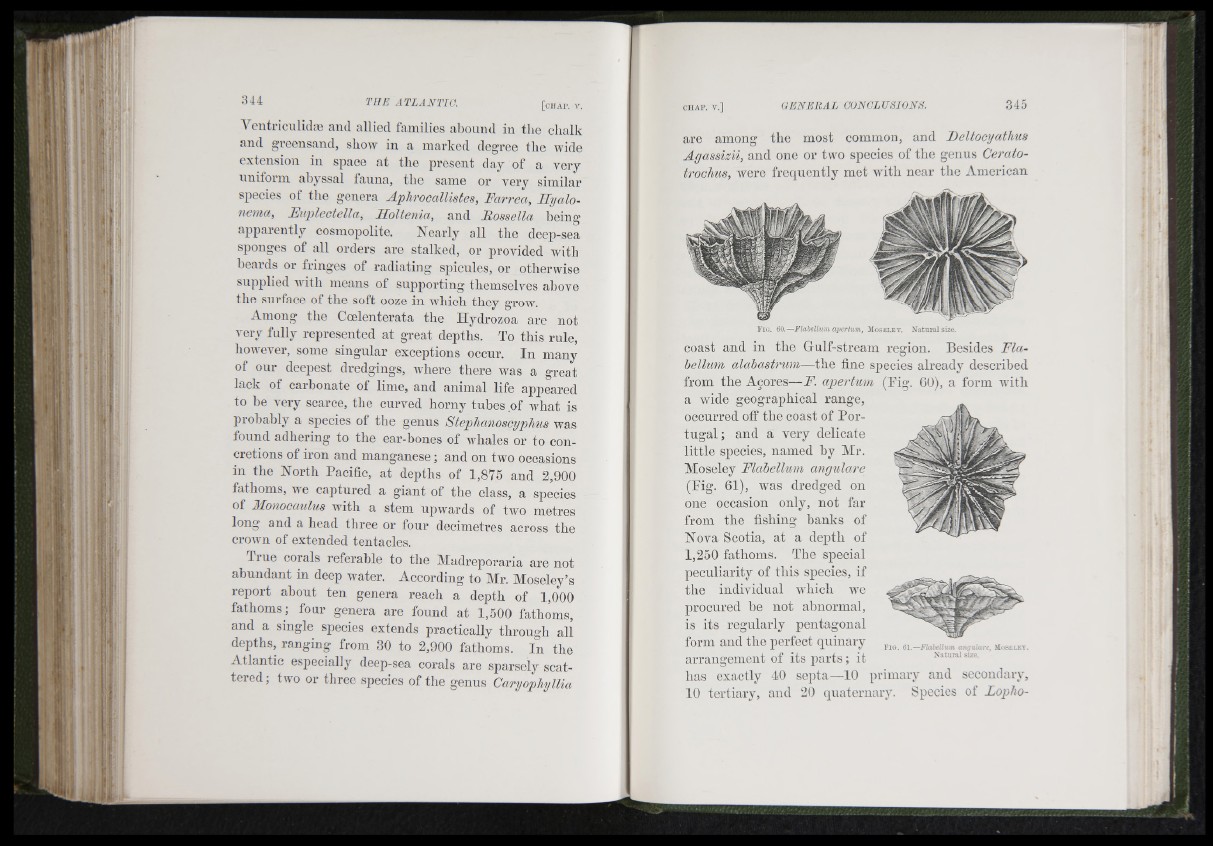
U I
S i '
f«i, :i !
Í 1
Í !
M. i
î :
■ f
i
'U
i ; t lî l'
1 .
r i!!, , : :%■ i' ^
Ventriculidm and allied families abound in tlie cbalk
and g’veeiisand, sIioav in a marked degree tbe wide
extension in space a t tbe present day of a very
nniiorm abyssal iauna, tbe same or very similar
species of tbe genera ApJirocalUstes, Farrea, Ilyalo-
iienia, FupJectella, Iloltenia, and Fossella being
apparently cosmopolite. Nearly all tbe deep-sea
sponges of all orders are stalked, or provided witb
beards or fringes of radiating spicules, or otberwise
supplied Avitb means of supporting tbeniselves above
tbe surface of tbe soft ooze in Avbicli tbey groAv.
Among tbe Coelenterata tbe Hydrozoa are not
very fully represented at great depths. To tbis rule,
lioAA'eA'er, some singular exceptions occur. In many
of our deepest dredgiugs, wbere tbere was a great
lack of carbonate of lime, and animal life appeared
to be A'ery scarce, tbe curved horny tubes of Avhat is
jAi'obably a species of tbe genus Stephcmoscyphus was
found adhering to the ear-bones of vA'hales or to concretions
of iron and manganese; and on two occasions
in tbe North Pacific, at depths of 1,875 and 2,900
fathoms, we captured a giant of tbe class, a species
of Monocaulus with a stem upAvards of two metres
long and a head three or four decimeti“es across the
croAvn of extended tentacles.
True corals referable to tbe Madreporaria are not
abundant in deep water. According to Mr. Moseley’s
report about ten genera reach a depth of 1,000
fathoms; four genera are found at 1,500 fathoms,
and a single species extends practically through all
depths, ranging from 30 to 2,900 fathoms. In the
Atlantic especially deep-sea corals are sparsely scattered
; tAA'o or three species of tbe genus CaryophylUa
are among tbe most common, and JJeltocyalhus
Afjassizii, and one or two species of the genus Ces'ato-
troclms, Avere frequently met with near tbe American
IT g. 60.—Flabellum aperium, Mo s e l ey . N a tu r a l size.
coast and in tbe Gulf-stream region. Besides Flabellum
alabastnim—the fine species already described
from the Açores—F. apeAum (Pig. 60), a form with
a Avide geographical range,
occurred off tbe coast of Portugal
; and a very delicate
little species, named by Mr.
Moseley Flabellum angulai'e
(Pig. 61), was dredged on
one occasion only, not far
from tbe fishing banks of
Nova Scotia, at a depth of
1,250 fathoms. Tbe special
peculiarity of tbis species, if
tbe individual aaI i í c I i avc
procured be not abnormal,
is its regularly pentagonal
form and tbe perfect quinary
FiG. 61.— Flabellum M .s e l e y ,
arrangement of its parts ; it
N a tu r a l size.
has exactly 40 septa—10 primary and secondary,
10 tertiary, and 20 quaternary. Species of Loplio-